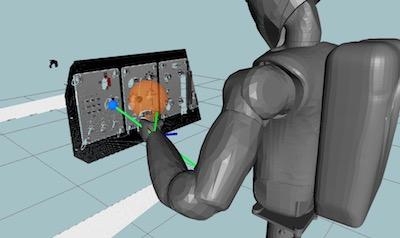Mon, Oct 08, 2018
Will Study The Use Of Robots In The Future Of Space Habitats And The International Space Station
Olis Robotics has been selected as a participating partner with NanoRacks to study and report on the viability of low-Earth orbit (LEO) commercial habitats known as Outposts, which includes utilizing robotics to repurpose and outfit discarded in-space structures like the upper stages of spent rockets.

In this four-month study, Olis Robotics will contribute to research to determine how Outposts and future operations on the International Space Station (ISS) may benefit from pilot-controlled remote robots and assess the optimal level of autonomy for each robotic task. Olis Robotics’ proprietary software OlisOS allows pilots controlling service robots to assign variable levels of autonomy according to the mission and task. OlisOS provides pilots with an unprecedented level of 3D situational awareness and leverages machine learning technology to identify and avoid objects in orbit to help ensure mission success.
Don Pickering, CEO of Olis Robotics, remarked, “The dynamic environment of space demands the precision, three dimensional understanding, and intuitive pilot controls that only Olis Robotics software provides.” Pickering continued, “This first-of-its-kind technology will support efficiently and safely building and maintaining the next generation of space habitats and allow us to reach faster and further outside our own orbit.”

According to a NanoRacks statement, the NASA study intends to provide a viable, realistic roadmap for all low-Earth orbit stakeholders, from the United States Government to commercial suppliers and end users. Olis Robotics is part of an 13-partner team supporting NanoRacks in this study.
“This team is unprecedented,” says NanoRacks Commerce Director and Principal Investigator for the LEO Commercialization Study Adrian Mangiuca in a recent NanoRack press release. “We have experts across the aerospace industry contributing innovative technology and business concepts, all for one collaborative program.”
(Images provided with Olis Robotics news release)
More News
Aero Linx: The American Society of Aerospace Medicine Specialists (ASAMS) The Society is a non-profit organization created to serve as a voice for and represent the professional ne>[...]
Class C Service This service provides, in addition to basic radar service, approved separation between IFR and VFR aircraft, and sequencing of VFR aircraft, and sequencing of VFR a>[...]
Have A Story That NEEDS To Be Featured On Aero-News? Here’s How To Submit A Story To Our Team Some of the greatest new stories ANN has ever covered have been submitted by our>[...]
Also: ERAU Uses UAVs, P550 Group 2 UAS, Starship’s Florida Launches, NASA Missions Chopped The Air Force has put out a call to commission a one-to-one copy of the Iranian-des>[...]
Classic Klyde Morris From 11.07.16 (and Remembering Bob...) FMI: www.klydemorris.com>[...]
 ANN's Daily Aero-Linx (08.27.25)
ANN's Daily Aero-Linx (08.27.25) ANN's Daily Aero-Term (08.27.25): Class C Service
ANN's Daily Aero-Term (08.27.25): Class C Service ANN FAQ: Submit a News Story!
ANN FAQ: Submit a News Story! Airborne-NextGen 08.26.25: Iran UAV Knockoffs, X-37B Spaceplane, Army Training
Airborne-NextGen 08.26.25: Iran UAV Knockoffs, X-37B Spaceplane, Army Training Classic Klyde Morris (08.25.25)
Classic Klyde Morris (08.25.25)




